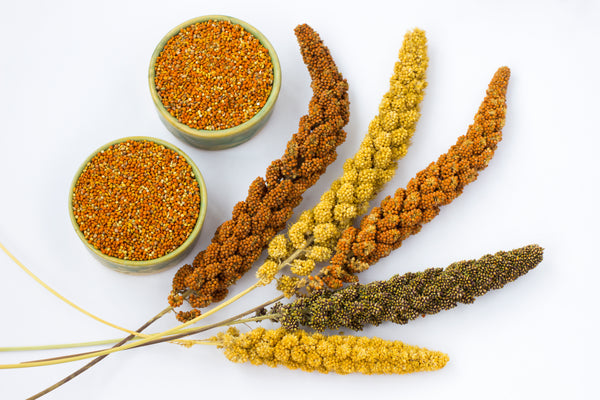It’s a word that’s being talked about more than ever before, but when you hear the word ‘’millet’’, what comes to mind? Did you think it was just one type of grain? Do you think foods its rich in fiber?
Contrary to popular belief, millets for diabetes are not a newly discovered grain, but an ancient cereal grain that has been used for thousands of years all over the world!
Millets are a family of grains that include some very well-known grains traditionally used in India such as Ragi, Jowar, Bajra, Kangni, Rajgira, Shavan, etc.
However, if you want to optimize your health and that of your loved ones, millets for diabetes would be the best grain to get you started on your journey. Whether you aim to become a vegan or to switch over to a gluten-free or low GI diet, millets foods rich in fibre, millets are the answer you’ve been looking for!
Let’s take a look at the reasons why millets are the gluten-free and vegan wonder food you’ve been looking for:
millets for diabetes are more nutritious than wheat and rice

Millets are known to have more fiber, minerals, and vitamins than even wheat and rice. If you’re looking for a multivitamin supplement that’s all-natural and chemical-free, then you should know that millets are packed with proteins, iron, calcium, magnesium, zinc, potassium, amino acids, and the B vitamins, And this foods rich in fibre that help you function in your physical and mental best.
Millets are gluten-free

Millets are a grain that is gluten-free in its natural form. So, if you are on a gluten-free diet or hope to switch over to one, this is the grain for you.
Millets have a low Glycemic Index (GI)

A low GI diet is often recommended for those with diabetes to reduce blood sugar levels naturally. Such diets have also been shown to lower the risk of heart diseases as well as promote healthy weight loss. Because millets have a low glycemic index, they are digested and absorbed slowly into the system and do not result in a sudden spike in blood sugar levels. Studies have shown that millets have a GI ranging from 54 to 69 which is optimal for anyone looking for the perfect low-GI grain.
Millets are ideal for a vegan diet

If you are looking to elevate your vegan lifestyle by a few notches, there could be nothing better than millets for it.
Millets are environmentally friendly

Millets have been around humans since the Stone Age and are grown in an environmentally sustainable way without requiring too much water or any particular type of soil, unlike other grains which are high-maintenance. If you are looking for foods that are friendly to the planet, then millets are the way ahead because this foods rich in fibre.
Now that you know about all the benefits of millets, you must be wondering how to incorporate them into your diet. This is very easy because millets can be used as either grains or flour and can substitute the cereals or grains that you are normally used to, whether it is rice or wheat.
This means that you can eat millet like rice, have it as a porridge, sprinkle it on salads, make it into an upma or khichdi, make it into laddoos or bake it into cookies, make dosas or idlis, parathas or Rotis.
Whether you are a foodie who wants to be healthy while continuing with a familiar diet or a health nerd with a taste for the exotic, millets for diabetes can elevate your health game substantially while ensuring you continue to have foods that are tasty and loved!

